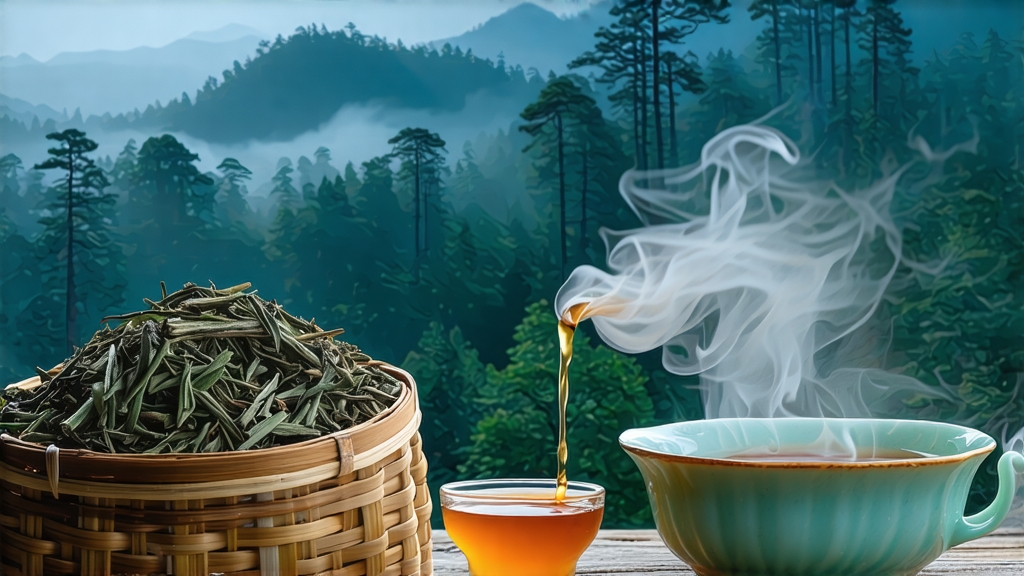
Lapsang Souchong—known in China as Zhengshan Xiaozhong—occupies a singular throne in the pantheon of black teas. It is simultaneously the oldest recorded black tea in world history and the most polarizing, celebrated for its seductive campfire aroma yet misunderstood when that fragrance is mistaken for “tar” or “ash.” To drink authentic Lapsang Souchong from its birthplace in Tongmu Village, high inside Fujian Province’s Wuyi Mountains, is to taste the very moment when Chinese tea masters first oxidized leaves fully, birthing the category we now call black tea (hong cha, “red tea” in Chinese).
Historical records kept by the local Xingcun guild show that in 1568, during the late Ming dynasty, soldiers billeted in the Wuyi hills forced tea farmers to speed up drying so that the leaf could be marched to market ahead of bandits. In desperation, the farmers placed the still-wet leaves over freshly cut pine fires. The resulting tea, dark and fragrant, fetched premium prices from Dutch traders in Xiamen, who shipped it to Amsterdam and later to London, where it became the cornerstone of the English Breakfast blend. Thus, a wartime improvisation became the prototype for every black tea that followed—from Assam to Ceylon to Keemun.
Geography is destiny for Lapsang Souchong. Tongmu Village sits inside a national nature reserve at 27° north latitude, where the Min River cuts a misty gorge of weathered granite. Day-night temperature swings of 15 °C force the indigenous Xiaozhong cultivar to thicken its leaf cuticle, concentrating aromatic oils. The forest itself is a living spice rack: Chinese red pine (Pinus massoniana), cedar, camphor, and wild orchids exhale resins that settle on tea bushes like perfumed dew. Only leaf picked within this 600-meter contour may legally bear the designation “Zhengshan” (“original mountain”). Anything else is simply “waishan” (outside mountain) or, worse, a bluntly smoked tea from another province.
Traditional Lapsang Souchong is not the pungent, creosote-black commodity most Westerners met in tins. The authentic process begins before dawn in late April, when two leaves and a bud are plucked from bushes that have been shaded for three days to boost theanine. The leaves are spread only one layer deep on large bamboo trays set inside the second floor of stilted wooden houses; cool mountain air wafts through latticed windows, withering the leaf slowly for eight hours without any sun. Once the edges turn chestnut and the grassy note fades, the leaves are rolled on rattan mats: first a light “killing green” twist to break cell walls, then a firmer kneading that encourages oxidation.
Oxidation happens in pine-wood crates lined with wet cloth. The leaf rests here for three to four hours, turning from jade to copper while absorbing microscopic terpenes already in the air. When the leaf emits a sweet dried-longan aroma, the master fires a shallow pit with pine logs that have been aged for two years to reduce sap. The tea is placed on bamboo sieves two meters above the embers; smoke, not flame, drifts upward for two minutes, then the leaf is rested, then smoked again—up to eight cycles. The final bake is 80 °C for two hours, locking in a fragrance that is unmistakably pine yet also sugared, reminiscent of lapsang resin and dried longan simultaneously.
Modern “unsmoked” or “light-smoke” versions have emerged to suit palates that recoil from campfire intensity. These are dried with electric heat, using only ambient pine air trapped in the building, yielding a tea that is malty, honey-sweet, and closer to a Keemun. Purists argue that without smoke the tea forfeits its soul; others claim the subtler style allows terroir to speak. Both styles, however, share a tell-tale sign of authenticity: a glossy, chocolate-colored leaf that smells of dried fruit even before water touches it.
To brew Lapsang Souchong gongfu style, use a small 120 ml porcelain gaiwan or a Yixing pot seasoned only with black teas. Heat the vessel with 95 °C water, then fill one-third with leaf—about 4 g. The first 5-second rinse